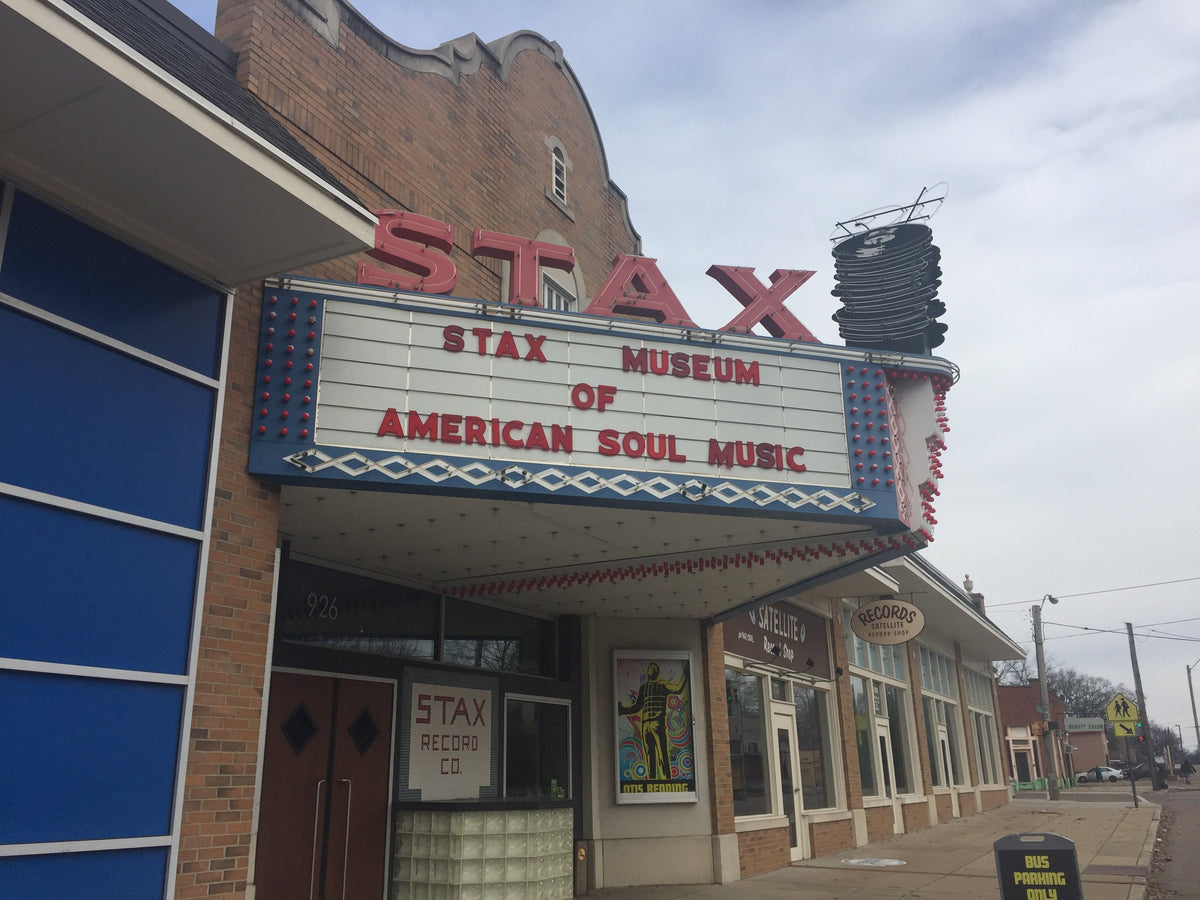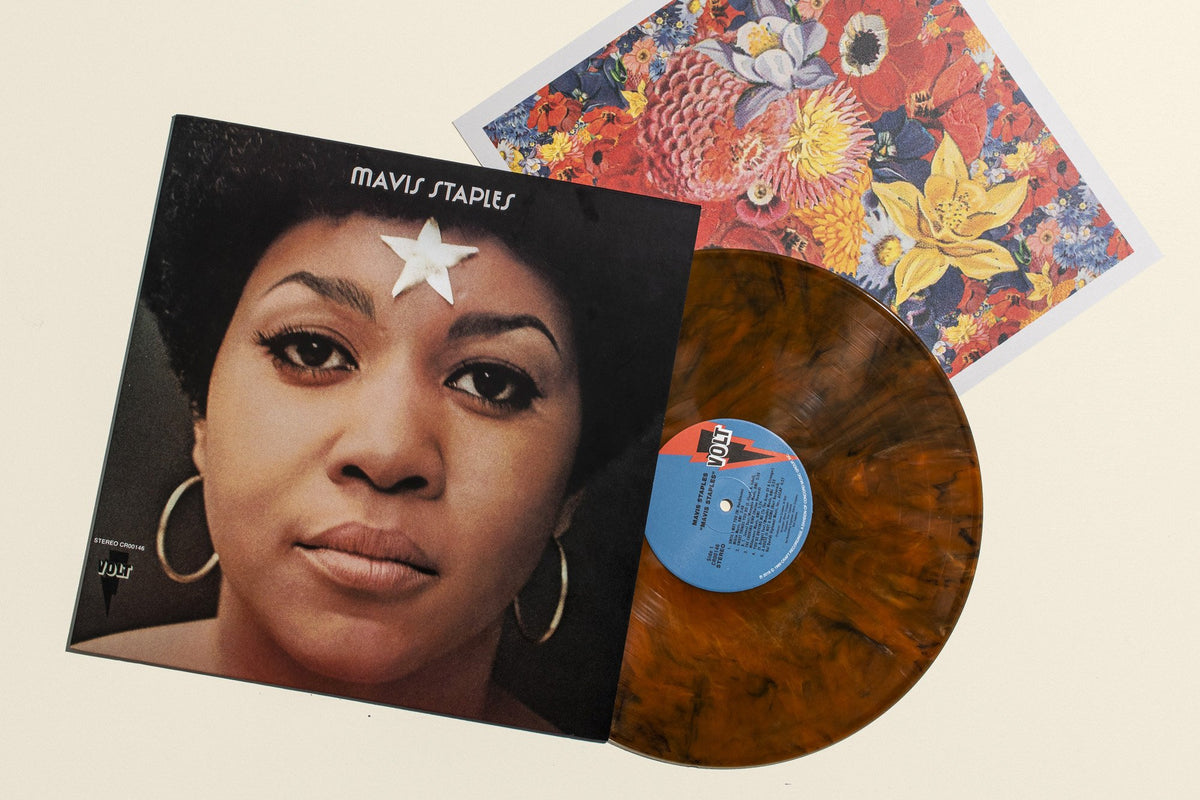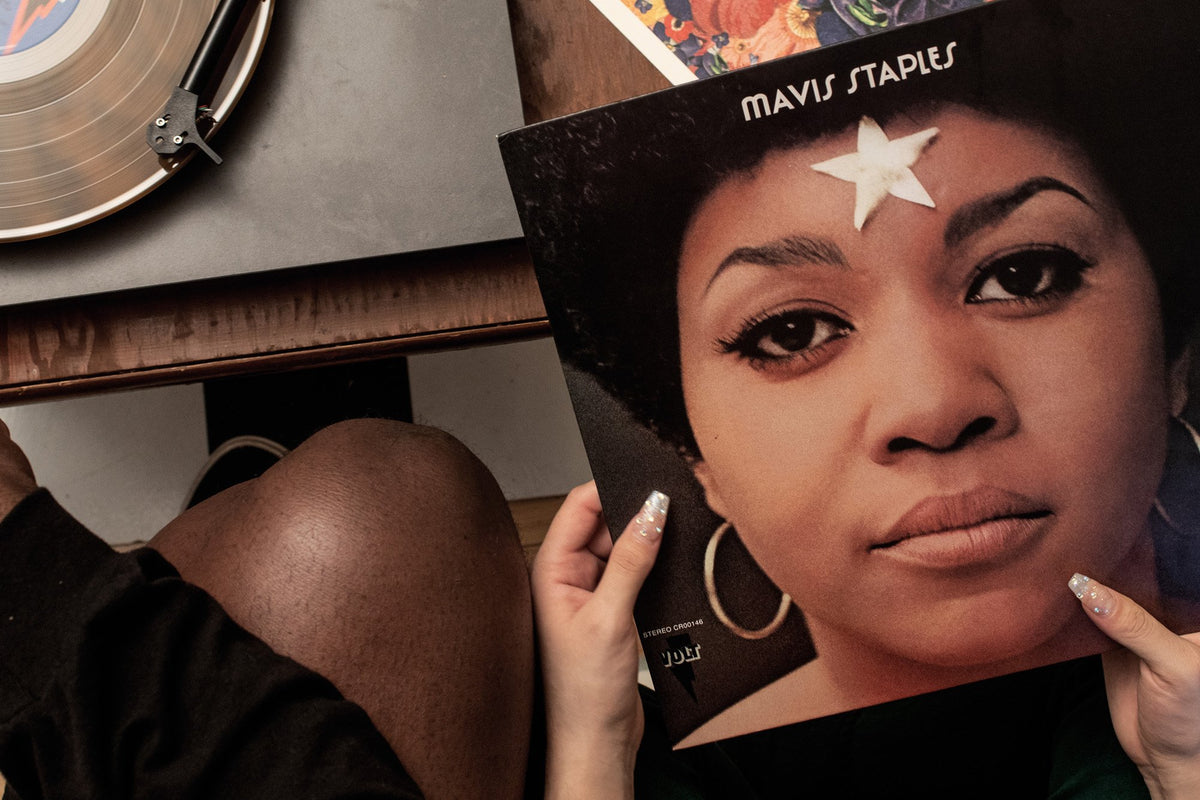Believe In Mavis Staples
Read The Liner Notes For Our New Edition Of ‘Mavis Staples’
This month, Vinyl Me, Please is featuring Mavis Staples’ self-titled debut as its Essentials Record of the Month. You can sign up to receive the album over here, and continue below to read new digital liner notes written for this Vinyl Me, Please edition of the album.
There’s a moment, 2 minutes and 25 seconds into Mavis Staples’ version of Hal David and Burt Bacharach’s “A House Is Not A Home” that deserves to stand alongside any singular moment you remember from any piece of music. The lyrics of the song, written in 1964, say, “As I climb the stairs and turn the key / Oh, please be there, still in love with me,” and that’s what Dionne Warwick sings on her version of the song from 1964 (and what Luther Vandross would sing on his version, which became the biggest hit of all of them). When Staples, then 30 years old and experiencing the disintegration of her own marriage happen at home, sang “A House Is Not A Home” at the end of side one of Mavis Staples, the line becomes: “As I climb the stairs and turn my key / Oh, please be there, still in love with me.” This was no longer a song she was covering faithfully anymore; this was a song she had internalized, a song she felt. The way Staples’ voice cracks on the “key” in that line is as good as an advertisement for her charms as a vocalist; whether she’s singing songs to God in the church, Burt Bacharach songs, Talking Heads covers, or songs written by the lead singer of Wilco, you can believe every word. Mavis Staples is nothing if not honest.
Despite Staples’ recent solo career resurgence — she’s recorded three LPs with Jeff Tweedy since 2010, won a Grammy and still tours consistently — being one of the best stories in all of music, her solo career is an unsung “what-if?” of music history. Her voice — low and powerful since she first took the stage as part of the Staple Singers as a pre-teen, like she was summoning it from the earth’s core — is one of the most iconic in R&B history, yet she didn’t get proper recognition as a solo artist until she was 60 years into her singing career. For a variety of reasons — one of them because Staples always felt most comfortable as a member of the Staple Singers during her younger years — her solo career is a story of starts-and-stops, near-misses and singles that didn’t get promoted like they should have. Depending on how you tally the various phases of Staples’ solo career, the comeback she’s experienced since 2004 is actually her third or fourth solo career revival, a third or fourth time that all she needed was a song to be more beloved and the arc of her solo career would have been different. There was the soundtrack album produced by Curtis Mayfield that reimagined Staples as a funkdafied disco singer, and a couple of albums in the late ’80s when Prince signed her to Paisley Park Records. Epic had attempted to force her out front of the Staple Singers in the early ’60s, but that single wouldn’t be properly appreciated until it ended up on a compilation in the mid-’90s.
Staples’ debut solo LP, Mavis Staples, is the first of a series of LPs that should have vaunted her to solo stardom. Recorded as part of the deal that brought the Staple Singers to Stax in 1968 — after years as gospel road warriors, band leader and Mavis’ dad Pops Staples brought the group there to try to go pop, and Mavis having a solo career was part of the negotiations — Mavis Staples is the sound of an artist, figuring out who she was and what she had to say, even if she was already 20 years into her career. While Mavis didn’t write any of the songs here, she lived them; these are 11 songs charting different points on the arc of a failed relationship, from the first brushes of love, to the way it feels like a romantic partner has your love forever, to the breakup you never see coming, to wishing that things would go back to normal and they’d still be there when you get home to an empty house.
Unfortunately, the album never charted, and it launched no singles. Staples wouldn’t win a Grammy for a solo performance for another 42 years.
Mavis Staples was born on the South Side of Chicago to Roebuck “Pops” Staples and his wife Oceola. The family had, like many other black families in the 1930s, fled the Jim Crow south for Chicago, and had been living there for a couple years — Pops working in mills and wherever else he could find work — when Mavis was born in 1939. By 1948, Pops and Oceola had fashioned their family into a travelling band, playing churches as a gospel group, buoyed by their vocal harmonies and Pops’ still-distinct guitar playing. Four years later they’d have their first record contract, and once Mavis graduated high school in 1957, the family hardly left the road for the next 25 years, playing Civil Rights marches, churches, concert halls and anywhere else that would have them.
It’s hard to accurately capture the impact of the Staple Singers’ influence on modern American music; that’s the way it usually goes with bands who had a bigger aesthetic impact than a commercial one. But artists as diverse as Sam Cooke and the Band, Bob Dylan and Creedence Clearwater Revival took bits and pieces from the Staple Singers’ songbook. (Don’t believe me? Compare this to this.) The group bounced around to virtually every prominent R&B and gospel label in the ’50s and ’60s, to various levels of success (their 1959 VeeJay album Uncloudy Day is a must-own), before Pops linked back up with an old friend named Al Bell, who had worked his way up from promotions man to functionally running Stax Records — the powerhouse Memphis soul label that was home to Otis Redding, Booker T. and the M.G.’s and more — in 1968.
Bell put the Staple Singers into the studio with Steve Cropper, the Booker T. and the M.G.’s guitarist who co-wrote smash Stax singles like “Knock on Wood” and “(Sittin’ On) The Dock of the Bay.” They delivered Soul Folk In Action, a solid toe-dip into secular music, which Pops still resisted. The highlight was the group’s cover of “The Weight,” by the Band, who’d they’d later share a stage with during The Last Waltz.
When it came time to record Mavis Staples a few months later, Bell paired Staples with Cropper, who produced the album, with some oversight from Pops, an ever-present guide for Mavis’ career. “The attitude at Stax was that she’s a superstar who nobody really knows about, and we have to figure out how to get her out there,” Cropper told Greg Kot in I’ll Take You There: Mavis Staples, The Staple Singers and the Music That Shaped the Civil Rights Era, the definitive biography of Mavis — and the Staple Singers, for that matter. “But it wasn’t easy, because she put limits on herself. There were only certain songs she would try. Her upbringing, her feeling about what songs would or wouldn’t go down with Pops, gave me the impression she didn’t want to go too far too fast.”
Pops wasn’t sure how secular he wanted Mavis to go in her solo debut, the same way he wasn’t so sure it was right for the Staple Singers to go pop in their own Stax debut. Like many performers before her — such as Cooke, Redding and Aretha Franklin — Mavis was having trouble navigating how far she wanted to leave the church behind.
“I’d gotten to be a young lady and I wanted to sing songs about my life as a young lady,” Staples told Kot in I’ll Take You There. “Pops said it was all right as long as I believed in what I was singing.”
And Staples could believe the songs of love and heartbreak on Mavis Staples. At the time, she was married to Spencer Leak, a Chicago mortician. She had married Leak in 1964, and their marriage was rocky basically from the start. Leak had wanted Staples to come off the road and be a stay-at-home wife, right at the time the Staple Singers were touring more heavily. Staples’ marriage was in tatters when she went into the studio to record Mavis Staples; she and her family were in Memphis, while her husband was back in Chicago. They’d be divorced a few years after Mavis Staples.
The songs Pops, Mavis and Cropper picked for the record ran the gamut from lighthearted flushes with love (“Sweet Things You Do”) to the zeitgeisty “Son of a Preacher Man” (recorded by virtually every female soul singer in the late ’60s), to a pair of Redding covers (the ballad “Good to Me” and “Security,” a song about the comfort of love). There was a cover of a semi-obscure country single that’d been covered by Waylon Jennings, “The Chokin’ Kind,” a song that could have served as a message to Leak back in Chicago, about how his love was the “chokin’ kind.” Mavis often called “You Send Me,” a song originally recorded by Sam Cooke when he went secular, as one of her favorites; she closes out Mavis Staples with a raw, stunningly beautiful take of “You Send Me,” chewing on every syllable and hitting every run perfectly.
The recording of Mavis Staples wasn’t without some struggle; Staples found it hard to sing alone. While recording “A House Without A Home” especially, she had to have Cropper come into the studio booth to provide moral support as she tore into the song.
“She made me stand there while she overdubbed the vocal, and it was like it made it OK for her to hold nothing back,” Cropper told Kot. “I’ll always cherish that moment.”
There wasn’t much time in those days to pontificate on what an album meant to someone’s career; Stax was like a factory back then, and albums were cut in a couple weeks and released as soon as possible. Mavis Staples came out during the busiest period in Stax history; the album was released as part of Stax’s Soul Explosion of 1969, a 12-month period where the label — now independent from Atlantic Records, which had distributed the first wave of classic Stax LPs — released 27 albums. That release schedule included albums from Isaac Hayes, Booker T., the Mad Lads, Carla Thomas, William Bell and plenty of artists who basically disappeared after. This meant that there was not a lot of runway for promotion of Mavis Staples, and the album failed to make much of an impact upon its release. Staples’’ take of “A House Is Not A Home” got some minor traction on R&B radio, but not enough to get the Stax machinery moving behind it. Bell would tell Kot that it took him awhile to realize the mistake he made not pushing it. “It’s a masterpiece in my mind,” Bell said in I’ll Take You There. “That should have been a hit on Mavis. She lived it.”
Staples would make one more solo album for Stax, 1970’s Only For the Lonely. She had recorded two songs she wrote herself for the album, and when she blanched at Stax’s publishing terms and rates, the label left the songs off the album. So Mavis rejoined the Staple Singers full time, abandoning her solo career again, in time for 1972’s Be Altitude: Respect Yourself, the album that made the Staple Singers into household names across America, finally, almost 25 years after they started singing in churches, thanks to the number one pop hit “I’ll Take You There.”
Eight years after Mavis Staples, Staples would go disco for two LPs, take 10 years off, pal around with Prince for a handful of years, and then take another 10 years off from her solo career — and to grieve Pops, who died in 2000 — till she came back with Have A Little Faith in 2004. The rest, as they say, is history. Mavis Staples should have been part of that history, but thanks to circumstances beyond Staples’ control, it’s remained a forgotten sliver of her story. 49 years later, maybe that can change.
Andrew Winistorfer is Senior Director of Music and Editorial at Vinyl Me, Please, and a writer and editor of their books, 100 Albums You Need in Your Collection and The Best Record Stores in the United States. He’s written Listening Notes for more than 30 VMP releases, co-produced multiple VMP Anthologies, and executive produced the VMP Anthologies The Story of Vanguard, The Story of Willie Nelson, Miles Davis: The Electric Years and The Story of Waylon Jennings. He lives in Saint Paul, Minnesota.
Related Articles
Join the Club!
Join Now, Starting at $36Pages







